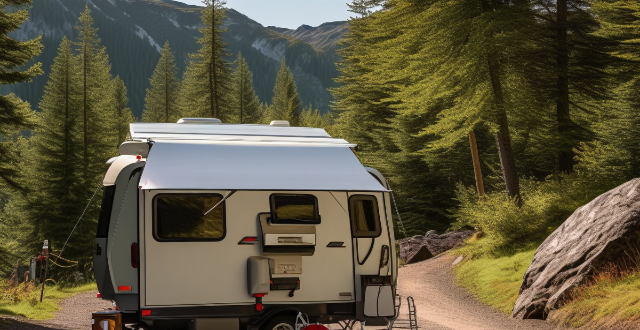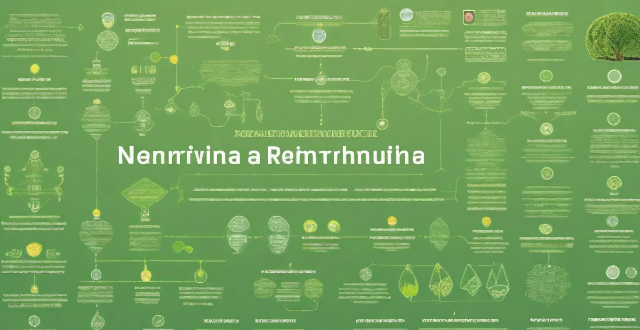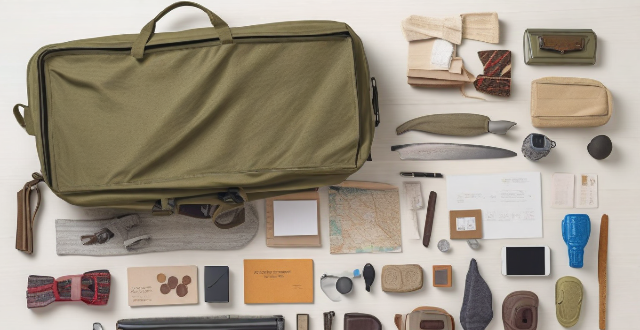Layer Warmth

What type of clothing is suitable for winter sports activities ?
When engaging in winter sports activities, it is crucialWhen engaging in winter sports activities, it is crucial ensure comfort, safety, and it is crucial to dress appropriately to ensure comfort, safety, and protection from the cold weather. Here's a detailed guide on what type of clothing is suitable for various winter sports: ## **Essential Layering System** ### **Base Layer:** - **Material:** Moisture-wicking fabrics like synthetics or merino wool. - **Purpose:** To keep sweat away from your body and maintain body temperature. - **Example:** Long-sleeve thermal shirts and tights. ### **Mid Layer:** - **Material:** Insulating fabrics like fleece or down. - **Purpose:** To provide warmth and insulation. - **Example:** Fleece jackets or lightweight down vests. ### **Outer Layer:** - **Material:** Waterproof and breathable fabrics like Gore-Tex. - **Purpose:** To protect against wind, snow, and rain while allowing moisture to escape. - **Example:** Waterproof ski jackets or snowboard pants. ## **Head-to-Toe Gear** ### **Headgear:** - **Beanie or helmet liner:** To keep your head warm and protected under a helmet. - **Neck gaiter or scarf:** To cover your neck and face from cold winds. ### **Handwear:** - **Gloves or mittens:** Waterproof and insulated to keep hands warm and dry. - **Glove liners:** Thin gloves worn underneath for added warmth. ### **Footwear:** - **Waterproof boots:** Insulated boots that are waterproof and provide good traction. - **Socks:** Thick, warm socks made of wool or synthetic blends. ### **Legwear:** - **Waterproof snow pants:** To keep your legs dry and protected from the snow. - **Base layers for legs:** Long underwear or tights for added warmth. ### **Eye Protection:** - **Goggles:** Protective goggles that shield your eyes from glare and UV rays. - **Sunglasses:** Polarized sunglasses for cloudy days or less intense activities. ## **Additional Accessories** - **Helmet:** Essential for activities like skiing and snowboarding to protect your head from impacts. - **Neck warmers:** Can be added for extra warmth around the neck area. - **Gaiters:** Helpful for keeping snow out of boots and pants. By following this comprehensive guide, you can ensure that you have the right clothing and gear for enjoying your favorite winter sports safely and comfortably. Remember, layering is key to adapting to changing temperatures and activity levels throughout the day.

What type of clothing should I pack for a week-long hiking trip ?
When packing for a week-long hiking trip, consider weather conditions, terrain, and activities. Layering is key, with essential layers including moisture-wicking shirts, lightweight pants or shorts, fleece jackets or vests, warm pants, and a waterproof and windproof jacket. Proper footwear is crucial, such as hiking boots, trail runners, and sandals. Don't forget accessories like hats, gloves, sunglasses, neck gaiters, and trekking poles. Additional items to consider include rain gear, extra layers, a towel, and a headlamp or flashlight. Pack smart and only bring what you need to avoid unnecessary weight.

How should I handle a cut that is bleeding profusely ?
How to Handle a Cut that is Bleeding Profusely: Stop the Bleeding: Apply direct pressure on the wound using a clean cloth or bandage. Elevate the injured area above your heart level if possible. If the bleeding doesn't stop after 10 minutes, apply more pressure and elevate it higher. Clean the Wound: Once the bleeding has stopped, gently clean around the wound with mild soap and water. Avoid getting any soap into the wound itself as it can cause irritation. Pat dry with a clean towel. Apply Antibiotic Ointment: Apply a thin layer of antibiotic ointment over the wound to prevent infection. Cover with a sterile bandage or gauze. Change Dressing Regularly: Change the dressing regularly to keep the wound clean and dry. Check for any signs of infection such as redness, swelling, warmth, or pus. Seek Medical Attention if Needed: If the bleeding does not stop after 20 minutes of applying pressure, seek medical attention immediately. If there are any signs of infection, such as fever, increased pain, or red streaks leading from the wound, see a doctor.

Can you teach me how to layer different liquors in a drink ?
Layering liquors in a drink is a fun and visually appealing way to create a cocktail. Here's a step-by-step guide on how to do it: Materials Needed: - Clear glass or jar - Spoon - Different liquors of varying densities Steps: 1. Choose your liquors: Select three or more liquors that have different densities. The general rule is that the heavier liquid goes at the bottom and the lighter one on top. 2. Chill your liquors: Chill your liquors before starting. This will help them mix less when pouring. 3. Pour the first liquor: Pour the heaviest liquor into the glass first. Tilt the glass slightly and slowly pour the liquor down the side of the glass. 4. Use a bar spoon: Use the spoon to gently place it at the surface level of the first liquor. Gently pour the second liquor over the rounded part of the spoon. 5. Repeat with other liquors: Repeat the process with the other liquors, making sure to always pour over the spoon and down the side of the glass. 6. Enjoy your layered drink: Once all layers are added, enjoy your visually appealing cocktail!

What are the best practices for packing light for a road trip adventure ?
Packing light for a road trip adventure is key to enjoying the journey without being weighed down by excess baggage. Best practices include planning outfits in advance, using packing cubes or compression sacks, rolling clothing instead of folding, sticking to a color scheme, opting for travel-size toiletries, wearing bulkiest items on the plane, and limiting accessories. By following these tips, you can ensure an enjoyable and stress-free road trip adventure.

How do I transition my wardrobe from summer to fall ?
Fall is a season of change, not just in nature but also in our wardrobes. Here's how you can smoothly transition your wardrobe from the light and breezy summer outfits to the cozier and warmer fall styles: - Firstly, take a look at what you have in your closet. Assess which items can be carried over to fall and which are strictly summer pieces. - Layering is key to fall fashion. It allows you to adjust your temperature easily throughout the day. - The colors of fall tend to be rich and warm, so start integrating these into your wardrobe. - Accessories can make a big difference in your fall look. - As the weather changes, so should your shoes. Boots are a staple for fall, whether they're ankle or knee-high. Closed-toe shoes are more appropriate than open-toe sandals. Waterproof materials can help when dealing with rainy days. - If your wardrobe is lacking in fall essentials, consider investing in some key pieces. A good quality leather jacket can be worn with almost anything. A warm coat suitable for your region's climate is a must. Chic trousers like cords or tailored pants replace shorts and skirts. - Finally, decide what summer items you won't need until next year. Light clothes can be stored away in vacuum bags or clean, labeled boxes. Consider donating anything you didn't wear this summer to make room for new fall purchases.

What are the essential steps for a quick makeup routine ?
The essential steps for a quick makeup routine include preparing your skin, priming your face, applying foundation, adding color, defining your eyes, and finishing with lipstick or gloss. This routine can leave you looking polished and put together in no time.

What are the essential items to include in a disaster preparedness kit ?
A disaster preparedness kit should include essential items such as water, non-perishable food, a first aid kit, warm clothing and bedding, light sources, communication devices, tools, cash, important documents, and personal items. It is crucial to regularly check and replace expired items to ensure the kit is ready for any emergency situation.

What are some popular trends in iPhone wallpaper design ?
The text discusses the popular trends in iPhone wallpaper design. The author lists seven different types of designs, including minimalism, nature, abstract art, gradients, retro and nostalgia, pop culture, and personalization. Each type is described briefly with its characteristics and appeal. The first trend is minimalism, which features simple lines and muted colors to create a sense of tranquility. Nature-themed wallpapers are also popular, ranging from landscapes to close-ups of flowers or animals. Abstract art is another trend that adds creativity and individuality to devices. Gradient wallpapers have become increasingly popular, featuring smooth transitions between colors. Retro and nostalgic wallpapers evoke feelings of warmth and familiarity. Pop culture-inspired wallpapers show off interests and personality. Finally, personalized wallpapers feature names, initials, quotes, or other personal touches. In conclusion, there are many popular trends in iPhone wallpaper design. Whether you prefer minimalism, nature, abstract art, gradients, retro styles, pop culture icons, or personalized designs, there is sure to be a trend that suits your taste and style.

How do Mexican spices and seasonings combine to create their iconic flavors ?
**Mexican Spices and Seasonings: A Flavorful Fusion** Mexican cuisine is renowned for its vibrant flavors, derived from a mix of spices and seasonings that reflect the country's rich history and cultural diversity. These ingredients add depth and character to dishes, creating iconic Mexican flavors through careful combination and layering. Key components include chili peppers like ancho, poblano, jalapeño, serrano, and habanero; herbs such as cilantro, epazote, and marjoram; aromatics like onions, garlic, and tomatoes; dried spices including cumin, coriander seed, cinnamon, and clove; and condiments like lime juice, salt, and peppercorns. The signature flavor is created by layering heat and sweetness, balancing herbal notes, building depth with aromatics, enriching with dried spices, and finishing with acidity and salt. This intricate blend of flavors makes Mexican food beloved worldwide.

What impact do sports have on the emotional content of a story or poem ?
The impact of sports on emotional content in stories and poems is significant, evoking a range of emotions including joy, sadness, excitement, disappointment, triumph, perseverance, camaraderie, and friendship. Sports can inspire readers with the accomplishments of athletes who win competitions or achieve personal bests, create a sense of excitement and happiness among readers, lead to feelings of disappointment and sadness when an athlete fails to meet their goals or suffers an injury, inspire readers with the resilience and dedication of athletes who overcome injuries or setbacks to achieve success, showcase the importance of friendship and loyalty through teamwork and camaraderie, and evoke feelings of warmth and affection between characters in a story or poem. By incorporating sports into their writing, authors can create compelling narratives that resonate with readers on an emotional level.

What are the best practices for篝火 safety to prevent uncontrolled fires ?
Fire safety is crucial when enjoying a bonfire. Here are some best practices to ensure a safe and enjoyable experience: 1. Choose the Right Location: Find a clear area away from trees, bushes, and any other flammable materials. Ensure that the fire pit or ring is made of non-flammable materials. 2. Check Local Regulations: Be aware of any local laws or regulations regarding open fires. Obtain necessary permits if required. 3. Gather Supplies: Have a fire extinguisher or a bucket of sand/water nearby. Prepare shovels and other tools for tending the fire and emergency situations. 4. Stack Wood Properly: Use dry, seasoned wood to reduce smoke and flame-ups. Build a 'log cabin' or 'teepee' structure for better airflow. 5. Light the Fire Safely: Use a match or lighter; avoid using accelerants like gasoline or lighter fluid. Light the fire from the upwind side to prevent sparks from blowing onto you. 6. Keep the Fire Small: Only build a fire as big as needed for warmth and light. Don't add too much fuel at once; keep it manageable. 7. Never Leave the Fire Unattended: Always have someone present to watch the fire. Have a plan in place for emergencies or if you need to leave temporarily. 8. Monitor Wind Conditions: Be aware of changing wind patterns that could spread sparks or embers. If conditions become unsafe, be prepared to extinguish the fire promptly. 9. Properly Extinguish the Fire: Drown the fire with water, ensuring that all embers are wet and cold to the touch. Stir the ashes and add more water until everything is completely soaked. 10. Dispose of Ashes Carefully: After the fire is completely out, allow the ashes to cool before disposal. Place ashes in a metal container and dispose of them in a proper location. 11. Clean Up the Area: Remove any trash or leftover materials from the site. Leave the area cleaner than you found it.

What makes street food unique in different parts of China ?
Street food in China reflects the country's diverse cultural heritage and regional differences. From hearty meals in the north to seafood delights in the south, each region offers its own unique flavors and dishes. The cuisine of eastern China is influenced by its coastal location and the use of soy sauce, while western China's mountainous terrain and ethnic diversity are reflected in the variety of street foods available. Regardless of where you go in China, you're sure to find something delicious to try!

What are some unique and creative gift ideas for Christmas ?
Unique and Creative Gift Ideas for Christmas Christmas is a time for giving, and what better way to show your loved ones how much you care than with a unique and creative gift? Here are some ideas that will make your holiday season memorable: 1. Personalized Gifts: Custom jewelry, handmade items, and DIY candles are thoughtful and elegant options that show warmth and love. 2. Experience Gifts: Adventure activities like skydiving or surfing lessons, cultural experiences such as theater tickets or cooking classes, and tech-savvy gifts like custom phone cases or smartwatches offer exciting opportunities for personal growth and enjoyment. 3. Charitable Gifts: Donations in their name to animal welfare organizations, educational fundraisers, environmental protection groups, child sponsorship programs, community gardens, or arts patronage support causes close to their heart while making a positive impact on the world. 4. Pampering Gifts: Beauty treatments like spa day passes, manicure/pedicure sets, aromatherapy kits, wellness packages such as yoga class subscriptions, juicer machines, and meditation apps promote relaxation and self-care. Remember, it's not about how much you spend but the thought and effort behind the gift that truly matters. So get creative and make this Christmas one to remember!

What are some examples of recent technological advancements in renewable energy sources ?
Renewable energy sources have been gaining momentum in recent years due to the increasing awareness of climate change and the need for sustainable alternatives to fossil fuels. Here are some examples of recent technological advancements in this field: - Solar Energy: Perovskite solar cells, bifacial solar panels, concentrated solar power (CSP) systems with efficient heat transfer fluids and storage systems. - Wind Energy: Floating wind turbines designed for deep waters, smart grid integration with improved forecasting techniques, demand response programs, and energy storage solutions. - Hydropower: Run-of-river systems that minimize environmental impact by utilizing natural river flow, low head hydropower installed in existing water infrastructure without significant modifications. - Geothermal Energy: Enhanced geothermal systems (EGS) with improved drilling techniques and efficient heat exchangers, low-temperature geothermal heat pumps harnessing warmth from Earth's surface even in colder climates. - Biomass Energy: Anaerobic digestion process breaking down organic matter to produce biogas for electricity generation or as a natural gas substitute, torrefaction converting biomass into coal-like substance called biocoal with higher energy density and potential applications in replacing coal in power plants and industrial processes.

What are the best holiday gifts for family members ?
Finding the perfect holiday gifts for family members can be a daunting task. However, with some thoughtful consideration and creativity, you can find something special that will bring joy to your loved ones. Here are some ideas for the best holiday gifts for family members: ## For Parents - Personalized Photo Album: Collect photos of family memories and create a beautiful photo album. You can personalize it with their names or a special message. - Spa Day Gift Basket: Give your parents a day of relaxation with a spa gift basket. Include items like bath bombs, scented candles, and massage oils. - Customized Jewelry: Surprise your parents with customized jewelry pieces such as engraved bracelets or necklaces with their initials or birthstones. - Subscription Boxes: Choose from various subscription boxes such as gourmet food, books, or gardening supplies based on their interests. - Tech Gadgets: If your parents love technology, consider getting them the latest gadgets like smart speakers, fitness trackers, or e-readers. ## For Siblings - Gift Cards: Let your siblings choose their own presents by giving them gift cards to their favorite stores or online shops. - Board Games/Puzzles: Spend quality time together by playing board games or working on puzzles as a family during the holidays. - Sports Equipment: If your siblings are into sports, consider buying them new equipment or gear for their favorite activities. - DIY Craft Kits: Get creative and make DIY craft kits with your siblings. You can make things like friendship bracelets, painted rocks, or tie-dye shirts. - Experience Gifts: Give your siblings an experience they'll never forget, such as concert tickets, cooking classes, or outdoor adventures. ## For Grandparents - Customized Family Tree Plaque: Create a personalized family tree plaque featuring all the names of the grandchildren and great-grandchildren. - Digital Photo Frame: Keep grandparents connected to their loved ones by gifting them a digital photo frame preloaded with pictures of the family. - Comfy Blankets/Throws: Give your grandparents warmth and comfort with soft blankets or throws in their favorite colors and patterns. - Memory Book: Compile a memory book filled with stories, recipes, and photographs from throughout the years to preserve family history. - Health & Wellness Products: Show your grandparents you care about their health by gifting them products like air purifiers, massage pillows, or foot baths.

How does a network bridge improve internet connectivity ?
A network bridge is a device that connects two or more networks at the data link layer, offering benefits such as reduced congestion, increased security, enhanced performance, cost-effectiveness, and compatibility. It improves internet connectivity by segregating traffic, filtering based on MAC addresses, optimizing routing, and extending the use of existing infrastructure. Bridges are applicable in home, enterprise, and public access networks for connecting devices, separating departmental networks, and providing guest access.

Can you provide examples of successful knowledge frameworks in various disciplines ?
Knowledge frameworks are structured approaches to organizing information within a field of study or practice. Successful examples include the human body systems in medicine, the OSI model in computer science, the language acquisition framework in linguistics, SWOT analysis in business, the ecosystem services framework in environmental science, and Bloom's Taxonomy in education. These frameworks facilitate specialized knowledge, standardize protocol development, guide teaching methods, support decision-making processes, highlight interdependence between natural systems and human well-being, and promote higher-order thinking skills.

What is the best way to cook tempura batter ?
Tempura is a Japanese dish that originated in the late 16th century. It consists of seafood, vegetables, or other ingredients dipped in a wheat-flour batter and deep-fried. The key to perfect tempura lies in the preparation of the batter. Here are some tips on how to make the best tempura batter: Ingredients: - Vidalia Onions - These sweet onions are low in sulfuric compounds, which makes them easier to digest. They also have a lower fiber content than yellow or white onions, making them less likely to cause gas or bloating. - Garlic - Garlic is rich in antioxidants and has anti-inflammatory properties. It's also known for its immune-boosting benefits. - Ginger - Ginger has been used for centuries as a natural remedy for digestive issues. It can help relieve nausea and vomiting, reduce gas and bloating, and even alleviate symptoms of acid reflux. - Chicken Broth - Chicken broth is an excellent source of minerals like calcium, magnesium, and potassium. It also contains collagen, which is great for gut health. - Bone Broth - Bone broth is rich in amino acids like glycine and proline, which can help repair the gut lining and reduce inflammation. - Coconut Oil - Coconut oil contains medium-chain triglycerides (MCTs), which are easily digested and can provide quick energy for the body. It also has antimicrobial properties that can help support gut health. Preparation: 1. Chop your chosen vegetables into small pieces. This will ensure that they cook evenly and absorb the flavors of the broth. 2. In a large pot, heat up some coconut oil over medium heat. Add the chopped onions, garlic, and ginger, and sauté until they become fragrant and slightly softened. 3. Pour in the chicken broth and bone broth, then bring everything to a boil. 4. Once the broth is boiling, add in your chopped vegetables. Stir everything together so that the vegetables are fully submerged in the liquid. 5. Add salt, pepper, and any other desired seasonings to taste. Consider adding herbs like thyme or rosemary for additional flavor. 6. Reduce the heat to low and let the soup simmer for at least 30 minutes, or until the vegetables are tender and fully cooked through. 7. Ladle the hot soup into bowls and serve immediately. Enjoy the warmth and comfort of this delicious and gut-friendly vegetable soup!

What should I consider when making a shopping list for a new household ?
When making a shopping list for a new household, consider your budget, space, lifestyle, essentials, and personal touches. Prioritize items based on cost and importance, measure dimensions to ensure furniture fits, reflect on daily routines and hobbies, start with basic necessities, and add personal touches to make the space feel like home.

What should I pack in my carry-on luggage for a smooth airport experience ?
When packing your carry-on luggage, consider what you will need during the flight and at your destination. Pack documents and travel information, comfortable clothing and accessories, toiletries and personal care items, entertainment and electronics, snacks and water, cash and credit cards, a travel pillow, an eye mask and earplugs, a pen and paper, and a reusable shopping bag for souvenirs or dirty laundry. Check the airline's carry-on baggage policies before you travel to avoid any issues at the airport.

How do I start a successful composting system at home ?
Composting is a natural process that turns organic waste into nutrient-rich soil. Here's how you can start a successful composting system at home: 1. Choose the right location: Look for a shady, accessible, and well-drained spot. 2. Gather your materials: You'll need a compost bin or enclosure, brown materials (dead leaves, twigs, shredded paper), green materials (fruit and vegetable scraps, grass clippings, coffee grounds), and water. 3. Build your compost pile: Layer your materials, add water, turn your pile every few weeks, and monitor your progress. 4. Harvest your compost: Check the texture and aroma, and use it in your garden.